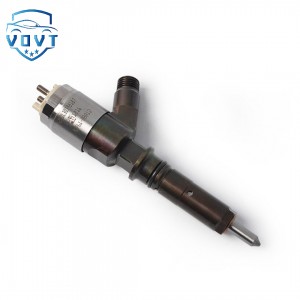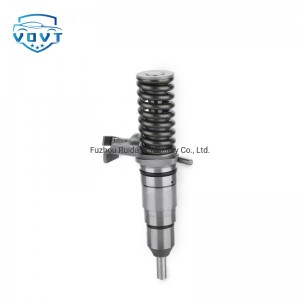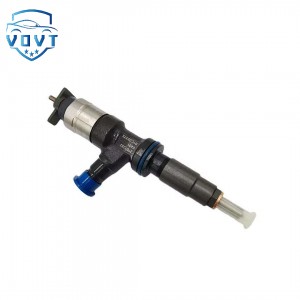New High Quality Diesel Injector 294-3002 10R-6162 359-4080 20R-1299 359-4090 20R-1298 For CAT C13E
Products Description
| Reference. Codes | C13E |
| Application | C13E |
| MOQ | 4PCS |
| Certification | ISO9001 |
| Place of Origin | China |
| Packaging | Neutral packing |
| Quality Control | 100% tested before shipment |
| Lead time | 7~10 working days |
| Payment | T/T, L/C, Paypal, Western Union, MoneyGram or as your requirement |
How to choose the right injector to optimize diesel engine emissions?
To select the right injector to optimize diesel engine emissions, the following key aspects need to be considered:
Engine operating conditions and use environment
Operating conditions: If the engine is often in high-load and high-speed conditions, such as long-distance transport trucks, the injector needs to be able to work stably under high pressure and large flow to ensure that the fuel is fully atomized and burned, and reduce emissions. Bosch's CPN2.2 common rail injector can withstand high pressures above 200MPa and is suitable for such operating conditions. If it is an engine that frequently starts and stops and runs at low load, such as a city bus, it is advisable to select an injector that can flexibly adjust the injection parameters, accurately control the injection amount and injection timing under different operating conditions, achieve good combustion, and reduce emissions.
Use environment: For engines used in cold areas, the injector is required to have good low-temperature starting performance, be able to quickly and accurately inject fuel, ensure good combustion when the cold engine is started, and reduce white smoke and unburned hydrocarbon emissions. For example, the ECD-U2 system injector of Denso has excellent low-temperature performance by optimizing the injector nozzle structure and control strategy. In high temperature and high altitude areas, the air is thin, and the injector needs to be able to accurately adjust the injection amount according to the actual intake volume to ensure a reasonable air-fuel ratio, maintain a good combustion state, and reduce emissions.
Injector technical parameters
Injection pressure: Higher injection pressure can make the fuel atomization finer, the oil and gas mixing more evenly, promote complete combustion, and reduce particulate matter and carbon smoke emissions. For engines with strict emission requirements, such as diesel engines that meet the National VI emission standards, injectors with injection pressures of 200MPa and above are usually required.
Injection timing: Accurate injection timing is crucial to optimizing the combustion process. Variable injection timing technology can adjust the injection time in real time according to the engine operating conditions, so that the fuel is injected into the combustion chamber at the best time, achieving efficient combustion and reducing nitrogen oxide and particulate matter emissions. For example, some electronically controlled injectors can accurately control the injection timing through the engine control unit (ECU), and maintain good emission performance under different operating conditions.
Spray characteristics: including spray cone angle, oil beam shape and oil droplet size distribution. The appropriate spray characteristics should match the shape of the combustion chamber and the airflow movement, so that the fuel is evenly distributed in the combustion chamber, avoiding the fuel hitting the wall or local over-concentration, improving combustion efficiency and reducing emissions. For example, for the ω-shaped combustion chamber, the spray cone angle is generally more suitable at 140° - 160°.
Fuel quality and compatibility
Fuel quality: There are differences in fuel quality in different regions and application scenarios, such as sulfur content, cetane number, etc. If the sulfur content of the fuel is high, it will accelerate the wear of the injector, reduce the injection accuracy, and affect emissions. At this time, it is necessary to select an injector with strong sulfur corrosion resistance, and its internal components can be made of special coatings or materials. For fuels with lower cetane numbers, the injector needs to have corresponding injection strategy adjustments, such as appropriately advancing the injection timing to ensure good combustion effects and reduce emissions.
Compatibility: The injector must be compatible with the type of fuel used by the engine, including conventional diesel, biodiesel, etc. Some injectors have been specially designed and optimized to adapt to different proportions of biodiesel and diesel mixed fuels, ensuring stable injection characteristics and good emission performance when using different fuels.
Brand and quality of injectors
Brand: Injectors from well-known brands usually invest more in R&D, production processes and quality control, and product performance and reliability are more guaranteed. Brands such as Bosch, Delphi, and Denso have rich experience and advanced technology in the field of diesel engine injectors. Their products have been verified by a large number of practical applications and can effectively optimize engine emissions.
Quality: The key components of high-quality injectors, such as injectors and solenoid valves, are manufactured using high-precision processing technology and high-quality materials, which can ensure that the injectors maintain stable injection characteristics during long-term use and reduce emissions caused by component wear or failure. At the same time, a good quality control system ensures that every injector meets strict performance standards and emission requirements.
Cost and cost-effectiveness
Cost: The purchase cost and subsequent maintenance cost of the injector need to be considered comprehensively. Although high-end injectors have excellent performance, they are expensive and may not be applicable to some cost-sensitive applications. For example, some small agricultural machinery or low-end commercial vehicles can choose cost-effective domestic injector brands to reduce costs while meeting basic emission requirements.
Cost-effectiveness: The relationship between the performance improvement and cost increase of the injector needs to be comprehensively evaluated. If an injector can significantly reduce emissions, improve engine performance, and save fuel costs in long-term use, its cost-effectiveness may still be high even if the initial purchase cost is high. For example, some advanced common rail injector systems, although expensive to purchase, can significantly reduce fuel consumption and emissions, which can bring economic and environmental benefits in the long run.























